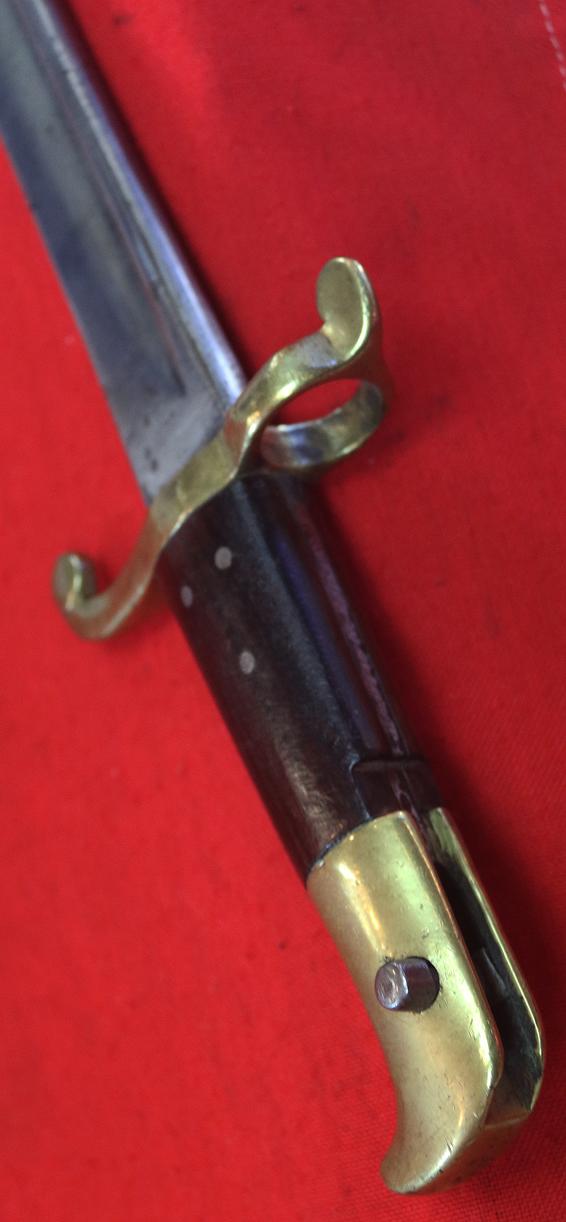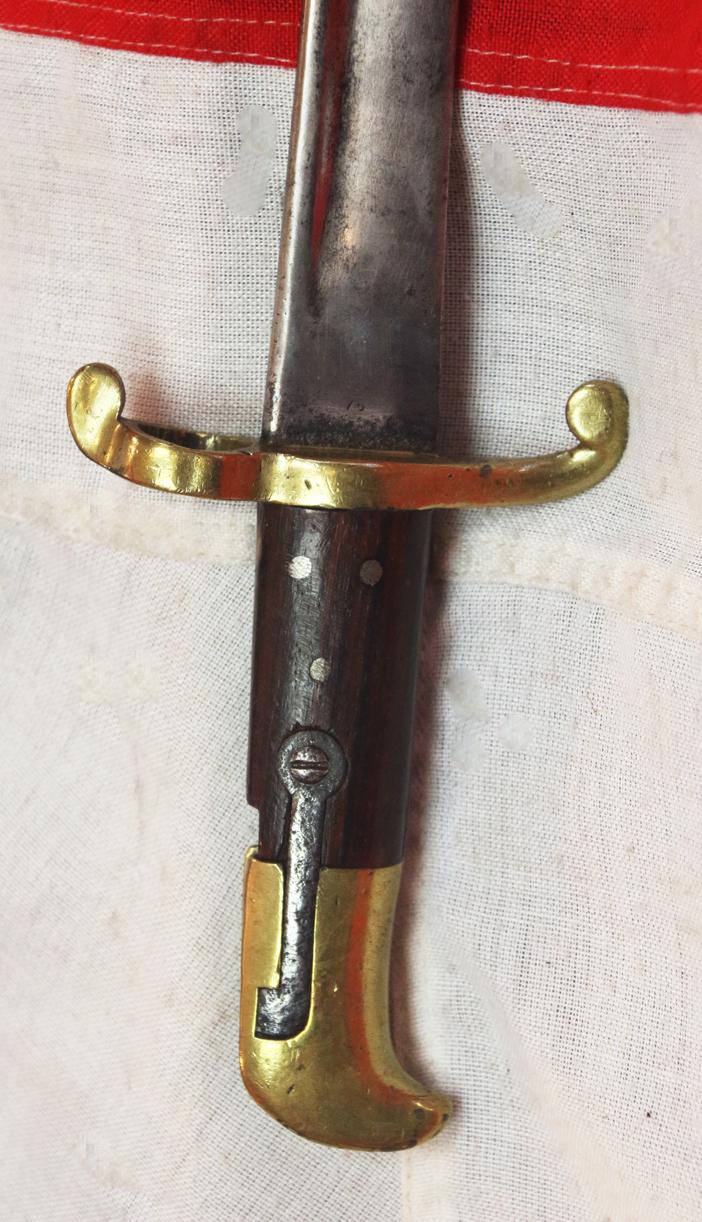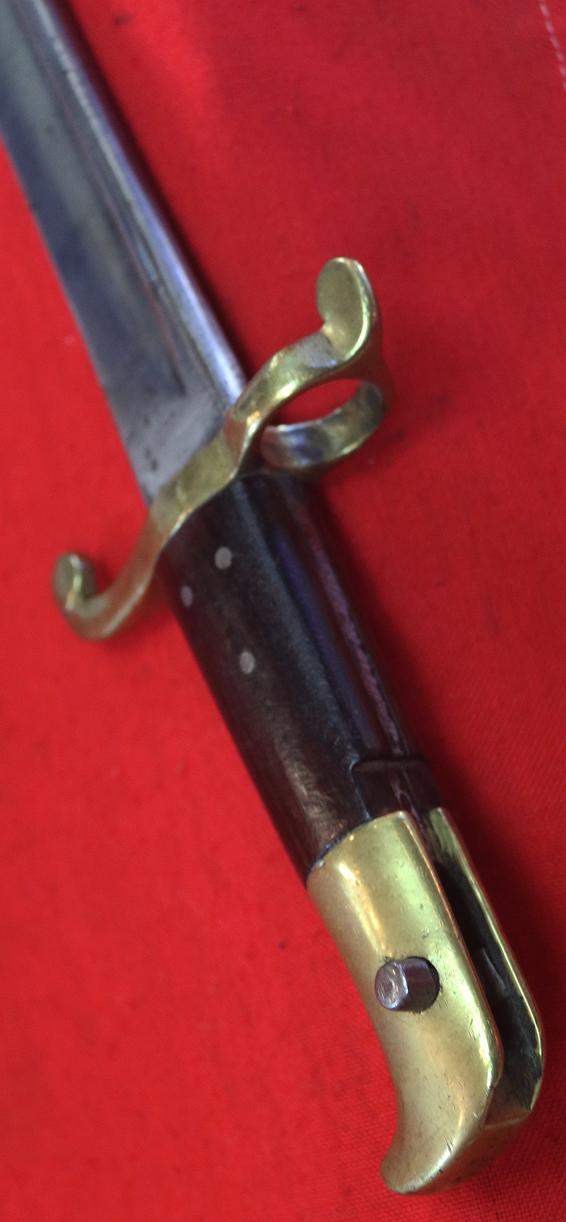A Scarce Lancaster Oval Bore Rifle Sword Bayonet, Sappers and Miners 1855, Shortened Quill Back Blade
Brass mounted hilt, three rivet wooden grips and screw mounted spring would have originally permanently fixed with a rivet, but an improvement replacement of a screw meant an armourer of the regiments could repair it in the field, a fixed rivet meant the bayonet would have to return to the regiment for repair if required.
Two-Band Rifle-Musket by Charles Lancaster, manufactured in London, England circa 1850's. Charles William Lancaster (1820-1878) was devoted to his craft and was among the best England had to offer in the field of firearms making and invention. It was around the year 1850, when he conceived the idea of the oval bore. Indeed, it is very slightly oval, almost imperceptibly and the rifling is very subtle and this rifle could easily be mistaken for a smooth bore. The rifling is also “gain twist”, meaning that the twist gets faster as the projectile approaches the muzzle. He believed that the oval bore was the future form all rifles and cannons should take due to the design’s inherent ability to mitigate the fowling that came from using black powder, as well as their accuracy.
He would put his idea to the test when he entered the government trials for what would become the Pattern 1853. He would spend much of 1852 and 1853 in doing so. His oval bore proved more accurate and less prone to foul than the competition, though the very subtle rifling was prone to wear out sooner with much use than conventional rifling. His system was not ultimately adopted for the Pattern 1853 infantry rifle-musket, but it was adopted in smaller numbers for sapper muskets.
No scabbard overall 20.5 inches long, blade 15.5 inches hilt from ricasso base 5 inches.
Code: 25179
450.00 GBP









